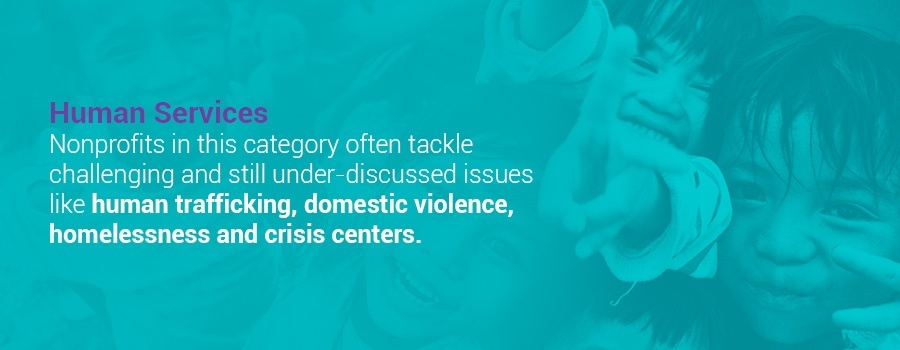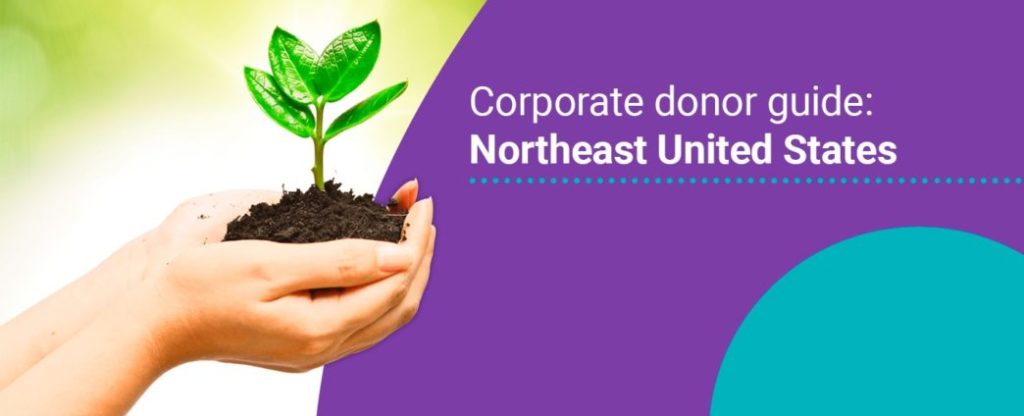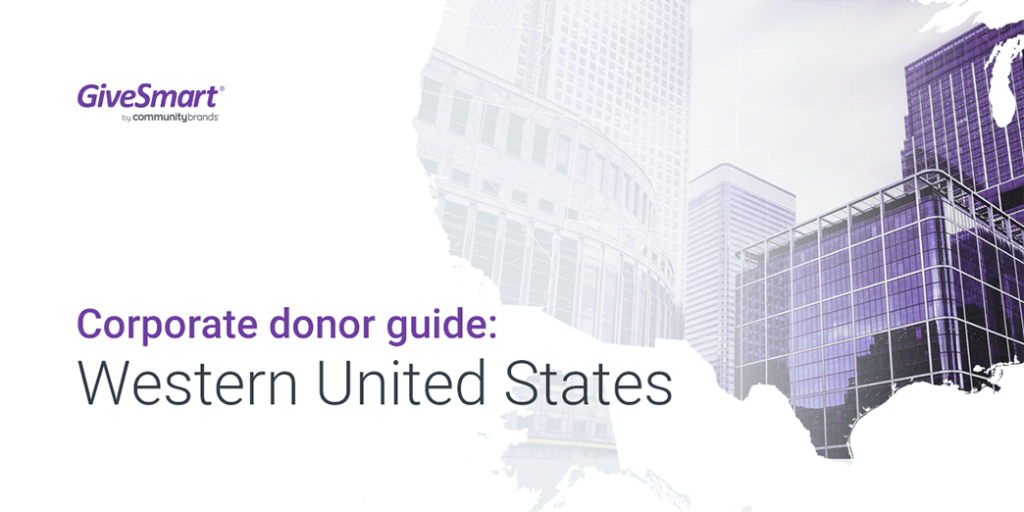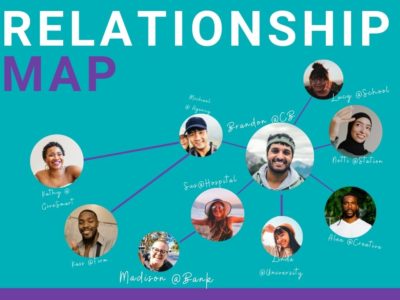Aug 29, 2019
San Francisco Corporate Philanthropy Guide
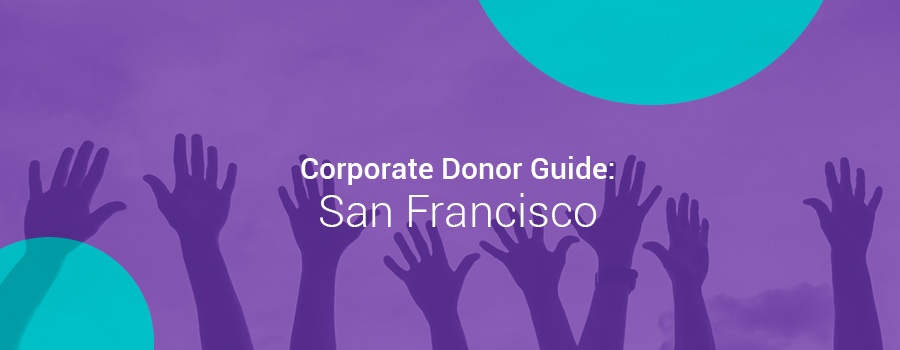
San Francisco has been a harbinger for historical and social progress in the United States as well as the entire world. Still, few recognize the influence San Francisco-based nonprofits have had on the city’s rich history — in many ways, they’ve pioneered the very cultural, civil and social institutions the Golden City is known for.
Today, San Francisco nonprofits continue that progressive legacy by partnering with area corporate donors. These corporate sponsorships often empower nonprofits to expand their programming, stabilize operations and increase total long-term community impact.
In this San Francisco Corporate Donor Guide, we’re profiling the Bay Area’s top businesses and companies dedicated to a spectrum of regional causes. With the Bay Area often defined by a severe economic prosperity paradox, corporate philanthropy can be the bridge connecting the area’s resources with deserving local needs.
This corporate donor guide also contains:
- How and why nonprofits should partner with value-compatible corporations
- Top corporate donors in San Francisco and the broader Bay Area
- Target philanthropic areas, or segments, of each company
- How your San Francisco nonprofit can stand out from the competition
For additional regional nonprofit guides, as well as broader tips and insights within the nonprofit industry visit these other great guides.
- Western States Corporate Donor Guide
- Southeast Corporate Donor Guide
- Northeast Corporate Donor Guide
- Houston, TX Corporate Donor Guide
- Miami, FL Corporate Donor Guide
- Phoenix, AZ Corporate Donor Guide
- Milwaukee, WI Corporate Donor Guide
The importance of proper alignment between your nonprofit and potential corporate sponsors
Identifying corporate sponsors is one thing. Finding and pitching corporate sponsors with true value alignment is entirely another. Yet when done right, it’s these partners that bring the most stability and meaning to the work your nonprofit achieves — and allow you to do so for years to come.
1. Prioritizes mission and values
Your mission acts as a compass guiding your programming and priorities.
The majority of nonprofits today communicate their core values through a mission statement, one detailing who they are, who they serve and why they’re doing the work they do.
Likewise, it’s becoming increasingly popular for businesses to write and use their own mission statements — often relaying the same principles. While nonprofits and private companies may exist to perform different end goals, their mission statements are a place of convergence. Your nonprofit will find much more success in pitching corporate donors when you share a similar mission and value statements. Use those statements to your persuasive advantage.
2. Generates employee buy-in
Employees want to work for companies that care about the community. Over 70% of today’s workers say it’s “imperative” or “very important” to work for a company where volunteering and corporate giving is a priority.
Because you’ve identified an organization that matches your values, you’ve also likely stumbled upon a group of people with similar sentiments. This opens the door to a new base of dynamic, skilled and often underused people willing to engage with your nonprofit as much as you wish to engage with them.
Consider all the ways this employee connection and buy-in can contribute to your organization, such as through the following:
- Volunteering opportunities: Your sponsor’s employee base is a perfect network to reach out to when you need volunteers. You can even host special volunteer events exclusively for this group.
- Employee gift-matching: Set up an employee gift matching program between you and your corporate sponsor. The company commits to matching any donations their employees make over the course of the year, with proceeds going directly to your causes.
- Awareness and advertising: Send employees event calendars, t-shirts, sweatshirts, branded desk objects and any other merchandise they can display at the office to help increase the name recognition behind your organization.
3. Expands networks
Value alignment between you and business partners introduces another benefit — an expanded network.
Most San Francisco nonprofits, including your own, likely have a core demographic of supporters. That group consists of the people most likely to donate to and engage with your organization — for example, retirees, college students, moms, veterans or perhaps something even more niche, such as pet owners or police officers.
What’s more, you likely already house data that identifies your core supporter network and demographics. By partnering with new corporate donors, you expand the demographics of your support network.
4. Boosts reputations
Corporate social responsibility, conscious capitalism, mission-driven business — whatever you call it, organizations want it. Their brand reputation today can even depend on it, with more and more consumers expecting brands to prioritize ethics and leave a positive impact on society. In fact, nearly 80% of today’s consumers think businesses should do more than “make money,” most notably by participating in social philanthropy.
When mission and values align, the reputations of both your nonprofit and your corporate sponsors improve. You provide an opportunity for an organization to broadcast its philanthropic priorities while widening your revenue streams. Likewise, your sponsor deepens their connection to the community and improves their brand reputation among target demographics.
5. Inspires a natural relationship
Value alignment between nonprofits and corporate donors increases the authenticity of their partnership. What’s more, it underscores how that partnership came to be in the first place — both parties recognized similarities in the other that made a camaraderie intuitive, not forced.
Just as people are drawn to others with similar likes and interests, nonprofits and their corporate partners will establish a quicker and more organic connection when bonded by like minded principles. That connection translates into a deeper, mutually fulfilling, and ongoing relationship.
6. Creates more sustainable revenue sources
The better the alignment between your nonprofit and its corporate partners, the likelier it is for those partnerships to last. This, in turn, means your nonprofit pivots from ad-hoc — and exhausting — donation pitches into more sustained program revenue models.
While no nonprofit should rest on its funding laurels, corporate donors built on real value alignment are more likely to contribute to your financial stability than many other nonprofit fundraising techniques.
Corporate donors by segment in San Francisco
In this section, we list top corporate donors in San Francisco and wider San Francisco County, categorized by nonprofit segment.
The section also includes:
- Brief descriptions of each nonprofit segment as it impacts San Francisco
- Each company’s stated philanthropic interests, priorities
- Direct links to a corporation’s donation request page, to review guidelines
1. Arts and culture
Few cities carry the same reputation for the cultural trendsetting as San Francisco. Considered a premier destination in the 20th century for music, literary and fine arts, San Francisco operates dozens of not-for-profit museums dedicated to everything from the Beatnik movement to renowned aquariums to one of the largest collections of Asian fine arts in the Western Hemisphere.
Local nonprofits in this sector sit at the forefront of cultural, political and artistic causes so engrained in San Francisco’s identity. These include sponsoring youth arts programs, artist residencies, music festivals, dance troupes, theatres and more.
San Francisco businesses citing the arts as a key philanthropic pillar include the following:
- Dolby Laboratories: The audio technology company seeks philanthropic projects that marry science and art and bring real innovation to their direct communities.
- Fremont Bank: The regional bank supports an extensive range of programs and causes — and is cited as one of the top corporate philanthropists annually in the entire Bay Area.
- Garmin: The multinational tech and wearables company still maintains roots in the Bay Area and has a history of donating to local programs with an artistic, beautification and urban or rural renewal slant.
- Golden Gate Capital: The wealth management firm can be contacted directly for sponsorship requests related to arts and culture projects in San Francisco.
- Hornblower Cruises: The cruise and event operation responds to all digital donation requests submitted a minimum of 45 days before the program or fundraising event.
- T.Y. Lin International: The internationally spanning construction and infrastructure firm is one of the largest in the area and can be contacted at their regional San Francisco headquarters for all donation requests.
- Wells Fargo: Wells Fargo maintains extensive corporate philanthropy in San Francisco’s arts and humanities scene, including most recently sponsoring a community murals project.
2. Education
The San Francisco Unified School District enrolls over 60,000 youths in a county where 13% of the population lives below the Federal Poverty Level (set at $20,420 in 2017). However, given San Francisco’s considerably high cost-of-living compared to national averages, many use California’s Self Sufficiency Standard (SSS) when calculating Bay Area poverty rates. Using SSS figures, 27% of families — and over 50% of single-parent households — live below the poverty line, with poverty remaining a leading factor in the area’s educational outcomes.
Education nonprofits are a considerable factor in San Francisco’s above-average high school graduation rate (88%). Their work underlies many of the region’s reduced school lunch and breakfast programs, ESL courses, after-school tutoring and free SAT and college preparation. A micro-segment of education nonprofits dedicate resources to continuing education opportunities to Bay Area residents, particularly for immigrants and first-generation students.
San Francisco-based corporations with a dedicated interest in education causes include:
- Amgen: The biotech and pharmaceuticals company provides a wide range of support through nonprofit grants, research fellowships, education sponsorships, cash and in-kind equipment donations and more.
- Bank of the West: The locally headquartered bank donates generously to nonprofits performing financial education and management training programs for low-income households.
- Craigslist: The popular online platform lists education as one of its four core philanthropic areas of interest, offering partners one-time and recurring grants.
- Dolby Laboratories: Dolby Laboratories’ foundation prioritizes STEAM endeavors and therefore makes a natural grant source for education nonprofits.
- First Republic Bank: One of the regional bank’s philanthropic pillars includes financial empowerment, literacy and youth mentorship.
- It’Sugar: The novelty sweets brand makes a broad range of monetary and in-kind charitable donations for nonprofit events.
- Swinerton: The commercial construction company maintains a large foundation supporting event grants, direct donations, gift-matching programs, equipment drives and more, with both open-call and invitation-only sponsorship cycles.
3. Environment
Environmental nonprofits and government agencies have a long history of collaborative work within the city of San Francisco.
With its location on the mouth of the San Francisco Bay Delta Watershed, the area has long contented with water conservation as well as marine habitat and wildlife protection. It’s proximity to Silicon Valley also spurs continual policy and legislative attention in concerns such as green energy infrastructure, reduced per capita carbon emissions, clean air quality and urban green scapes.
While environmental nonprofits make up less than 10% of all registered philanthropic organizations in the Bay Area, their work is significant and total held assets one of the largest in the industry.
Businesses that make regular donations to environmental philanthropy in San Francisco include:
- Craigslist: Craigslist’s philanthropic pillars also cite the environment and transportation as key interest areas and lists their donation inquiries information on their Charitable Fund page.
- Del Monte: The food brand provides direct cash as well as product donations to natural disaster relief causes.
- Garmin: Garmin’s extensive grant-giving support is compatible with marine, ecological and green transportation causes.
- Pacific Gas & Electric: The utility organization works with environmental nonprofits to fund disaster and emergency relief as well as environmental stewardship programming.
- THCO: The premium chocolate maker’s own fair-trade and sustainability values lend themselves naturally to environmental philanthropic partnerships in San Francisco.
- Veggie Grill: The fast-casual health food chain takes donation requests up to four weeks in advance of fundraising programs and events.
- Wells Fargo: The finance institution runs a unique environmental grant program available for application through its network of channel sponsors.
4. Food security
The city of San Francisco maintains the highest rates of food insecurity of all nine Bay Area counties. In total, 16% of its residents experience issues related to food deserts and food security, the former meaning the nearest full-service grocery store is more than one mile away and the latter meaning reduced food intake and limited meal certainty.
These food security rates sit higher than the state’s average at 13%. What’s more, roughly 64% of San Francisco students qualify for reduced-price meals at school, whose programs are often founded or supported by neighborhood nonprofits.
This nonprofit sector is intricately tied with human services, environmental, agricultural and even urban development causes. While food-service related businesses make the most intuitive corporate donors for this segment, other prominent corporate partners include:
- Anchor Brewing Company: The San Francisco brewery operates donation and partnership opportunities for qualifying local events.
- Boudin Bakery: One of the Bay Area’s most successful name-brand bakeries, Boudin partners with nonprofits to provide food donations and funding assistance, particularly for nonprofits that work with children and families.
- Driscoll’s: Driscoll’s lends support to many intersectional food causes in California and beyond.
- Guittard Chocolate Company: The sweets brand can be contacted directly for local donation requests and information.
- Le Boulanger: Another storied Bay-Area bakery operates local and regional assistance to food banks and similar services throughout Northern California.
- OpenTable: The food-service app sponsors numerous food justice, equity and anti-hunger programs.
- Riverbed Technologies: Riverbed Technology’s philanthropic areas of focus include anti-poverty causes as a top concern.
- Veggie Grill: The nation-wide cafe chain makes an intuitive donations partner for those performing food security work.
5. Healthcare
Just over 9% of San Francisco’s population has no health insurance. Another 225,748 residents rely on Medi-Cal, the state’s Medicaid program for low-income individuals and families.
Healthcare nonprofits in the Bay Area work with specific medical concerns and populations, such as addiction or mental health for veterans, as well as broader city health outcomes, like obesity. Per industry data, roughly 9% of the state’s registered nonprofits are dedicated to the healthcare segment, with many based in or operating flagship offices in the Bay Area.
Top San Francisco businesses with healthcare as a stated philanthropic pillar include:
- Amgen: Amgen provides Bay Area medical research grants, medical equipment and healthcare-related donations.
- Bell: Bell states health and human causes as a core philanthropic area of focus for its annual corporate giving.
- Blue Diamond: The snack food brand donates to nutritional programs and projects addressing health, wellness and hunger in California.
- Blue Shield:Blue Shield’s foundation is currently relaunching its strategic priorities to focus on issues related to healthy, sustainable communities.
- First Republic Bank: The regional bank’s generous philanthropic interests also span issues related to public health, nutrition and medical care for the area’s most vulnerable populations.
- In-Shape Health Clubs: The gym and fitness studio accepts donation and sponsorship requests year-round.
- Le Boulanger: The bakery has a history of working with healthcare causes in the San Francisco area.
- McKesson: Though competitive, McKesson grants focus on creating healthier communities, with a “special focus on cancer” causes.
- THCO: The chocolate maker’s local corporate philanthropy is yet another potential outlet for healthcare and health services nonprofits.
6. Human services
Human services is a broad industry term categorizing the work of nonprofits delivering essential, primary quality-of-life resources to constituents. Broadly speaking, this includes but isn’t limited to career placement and job preparation, financial literacy, food banks, emergency services, disaster relief and temporary and long-term shelter for the homeless.
Many of these issues are a pressing concern for the Bay Area. The city of San Francisco maintains the largest income inequality ratios of all nine Bay Area counties. Those in the top-tier income bracket earn almost 27 times more than low-income San Francisco families. What’s more, 39% of San Francisco residents live with a “high housing burden,” meaning more than 30% of their income goes exclusively toward housing expenses. These statistics, and more, characterize the exact intersectional causes human-service nonprofits aim to address.
San Francisco corporations that donate to human service nonprofits include:
- Amgen: Amgen continues its corporate legacy of giving with a wide range of grants and donations pertinent to human services.
- Bank of the West:Bank of the West’s giving priorities include the rehabilitation of affordable Bay Area housing, credit and financial counseling programs for low-income households and financing services for small businesses and farms.
- Bell: The company also commits philanthropic resources to combat Bay Area homelessness and similar concerns.
- Bombas: The clothing brand donates cash and in-kind merchandise to human service nonprofits, though with a historical preference toward in-kind gifts.
- Del Monte: The company’s philanthropic commitment to “health, wellness and stronger farm to family connections” ties its givings closely to human service nonprofits delivering these kinds of programs.
- Duane Morris: Law firm Duane Morris provides some of the areas leading pro-bono civil legal services, consulting work and civil rights-centered donations.
- First Republic Bank: First Republic Bank outlines combatting issues of income and wealth inequality in neighborhoods as a philanthropic pillar, particularly through homeownership and loan support.
- Pacific Gas & Electric: The utility company’s charity work maintains “economic and community vitality” as a top priority.
- Riverbed Technologies: The company supports urban revitalization, housing and mentorship projects, among others.
- Union Bank: The regional bank offers donations, loans and investment vehicles to promote economic and communal growth in underserved neighborhoods.
Three ways to stand out from other nonprofits seeking corporate sponsorship in San Francisco
There are over 7,000 registered nonprofits in San Francisco alone — and over 34,000 in the wider Bay Area. Of those organizations, nearly half operate with revenues less than $25,000 annually.
This creates a disconcertedly competitive environment for San Francisco nonprofits to secure funding, amplified only by the area’s record-setting costs to operate.
How can nonprofits working San Francisco step apart from the crowd and attract more high-value corporate donors? Consider these corporate fundraising best practices.
1. Offer a la carte sponsorship packages
Traditionally, nonprofits pitching a corporate donor has gone something like this — nonprofits introduce themselves to senior leadership or a company’s foundation leaders, schedule a meeting, then deliver a formal presentation on the impact and needs of their nonprofit. They end the pitch by making their exact donation or sponsorship request.
This fundraising model is straightforward and professional. Yet it’s also rigid, coaxing corporations into one type of static partnership box, and yields a “yes” or “no” response from your audience.
San Francisco nonprofits should take a page from the for-profit world and offer an a la carte style of sponsorships. Provide a wide range of sponsorship types and opportunities as well as detail their impact. Converse with the company leaders to identify ideal results from their contribution. Then construct a sponsorship package from the ground up, prioritizing a business’ philanthropic goals and creating true value alignment.
2. Remember the details
Know the quickest way to burn through your corporate donors? Treating them as only that — a checkbook, not an actual human being.
The best nonprofit-corporate donor relations build over time. They involve dozens of interactions over one-on-one lunches, mingling at industry events and direct touchpoints through email, phone and more. Most of all, they make interactions about more than financial support — getting to know one another as people.
Make it a strategic priority to reach out to current and prospective donors alike during:
- Birthdays, anniversaries and holidays
- Important industry events
- Business achievements or milestones
Be generous with compliant gifts to donors as well. Send T-shirts, sweatshirts, calendars, plaques and more alongside more general calls and emails to check in with corporate sponsors and remind them of news or upcoming events.
3. Quantify impact
Sharing the social return on investment (SROIs) with donors is a powerful way to showcase how far funds go. Using objective figures to detail your ability to translate fundraised dollars into actual communal change also proves the professionalism of your operations.
Companies often cite SROIs and similar metrics as a top quality they look for in their philanthropic partners. The more your nonprofit can quantify its impact, the easier it will be to draw corporate donors to your causes.
How technology can improve nonprofit fundraising
Today’s technologies have introduced a new wave of fundraising and donor relations affordances for nonprofits in San Francisco and the wider Bay Area.
Nonprofit software, in particular, provides several time- and money-saving advantages for your organization. Designed to integrate many of the front-house and behind-the-scenes operations that go into hosting a nonprofit fundraiser, consider what nonprofit fundraising software can do for your revenue targets — and peace of mind.
1. Expands fundraising opportunities
With technology created specifically to host nonprofit fundraisers, your organization has more ways to crowdsource donations than ever:
- Text-to-give campaigns
- Online auctions
- Real-time mobile bidding
- Campaigns “shareable” on social media
2. Simplifies donor communications
Nonprofit fundraising software also allows you to “reach beyond the room” from the convenience of any device, both those in the office or on-the-go. Write, edit and send the full spectrum of donor communications so vital to thriving donor relations:
- Customizable text and email communications
- Live mobile alerts during online auction bidding
- Personalized calls-to-action during fundraising and donation moments
- Branded thank you letters
- Complete communications repository, for easy tracking and review
3. Unlocks fundraising analytics
Fundraising analytics allow you to see what donation strategies worked and which didn’t. Your nonprofit can then make informed decisions during its next fundraising cycle, working smarter — not harder — to surpass targeted goals.
- Computer and mobile-friendly macro dashboards relaying key fundraising metrics
- Customizable dashboard KPIs
- User-friendly fundraising reports
- Data input personalized for each fundraising campaign, program or even donor profile
Is your Bay Area nonprofit looking to increase its donations?
Fundraising and event-management software by GiveSmart helps create win-win collaborations for corporations and nonprofits in San Francisco.
Our fundraising platform amplifies the fundraising strategies you already undertake — only quicker, easier and with better oversight.
Interested to see how? Schedule a free event-management software demo today.
Related






